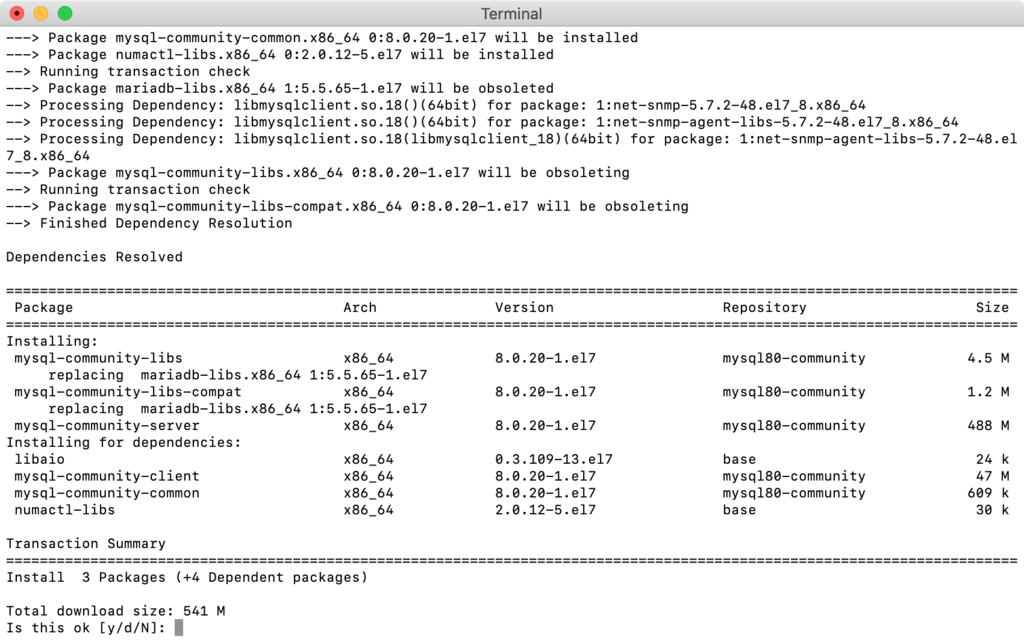

- Yum install rpm mysql update#
- Yum install rpm mysql code#
- Yum install rpm mysql password#
- Yum install rpm mysql download#
mysql -uroot -pĬreate a super user to access database server from outside server.

Yum install rpm mysql password#
Login with root and when prompted for password please provide the password that you have set for root user in the earlier step. Now lets login into the database server to create a super user for granting outside world access to the databases. usr/bin/mysqladmin -u root password 'opensourcedbms'
Yum install rpm mysql update#
Also there are other root users in MySQL if you are familiar with its users table [ once you login with superuser you can update all of them later. Replace this password to what ever you desire. To set the root user password run the following command as showed below. Now before logging into database server using MySQL client utility, we need to set the database root user password. To do that we need to start our newly installed database server. Its all done, lets set some passwords, create user and grant access to outside clients for accessing the database. Please report any problems with the /usr/bin/mysqlbug script! Strongly recommended for production servers. Which will also give you the option of removing the testĭatabases and anonymous user created by default. usr/bin/mysqladmin -u root -h opensourcedbms password ‘new-password’ usr/bin/mysqladmin -u root password ‘new-password’ To do so, start the server, then issue the following commands:

PLEASE REMEMBER TO SET A PASSWORD FOR THE MySQL root USER ! Preparing… # ġ:MySQL-shared # ~]# rpm -ivh MySQL-server-5.5.86_64.rpmġ:MySQL-server # Start with shared libraries first and then work towards installing server and client utilities at the very end. Make sure that Perl is installed on your server before you install MySQL, if not MySQL server rpm will complain that it cannot be installed. Now start installing rpm’s onto your server:
Yum install rpm mysql download#
6 (x86, 64-bit), RPM Package – Client Utilities : MySQL-client-5.5.86_64.rpmĪlternatively to directly download on command line yum install wgetĭownload the rpm’s command line with the following wget commands. 6 (x86, 64-bit), RPM Package – Shared components : MySQL-shared-5.5.86_64.rpm You want to download these rpm’s to your CentOS 6 server : Shutting down server: mysqladmin -h 127.0.0.First head over here and download MySQL 5.5.30 rpm’s under Oracle & Redhat Linux 6 platform section of rpm’s. Or mysql -socket=/home/martin/socket -u root -p (using unix socket) bin/mysqld_safe -defaults-file=~/my.cnf &Ĭonnecting to server: mysql -h 127.0.0.1 -P 3666 -u root -p (using tcp)

Note that -defaults-file MUST be the first parameter, otherwise it won't work! It's a MySQL bug. scripts/mysql_install_db -defaults-file=~/my.cnf -user=martin -basedir=/home/martin/mysql -datadir=/home/martin/sql_data -socket=/home/martin/socket Go to the /home/martin/mysql directory and execute. For example to: /home/martin/mysqlĬreate my.cnf file in your home directory.
Yum install rpm mysql code#


 0 kommentar(er)
0 kommentar(er)
